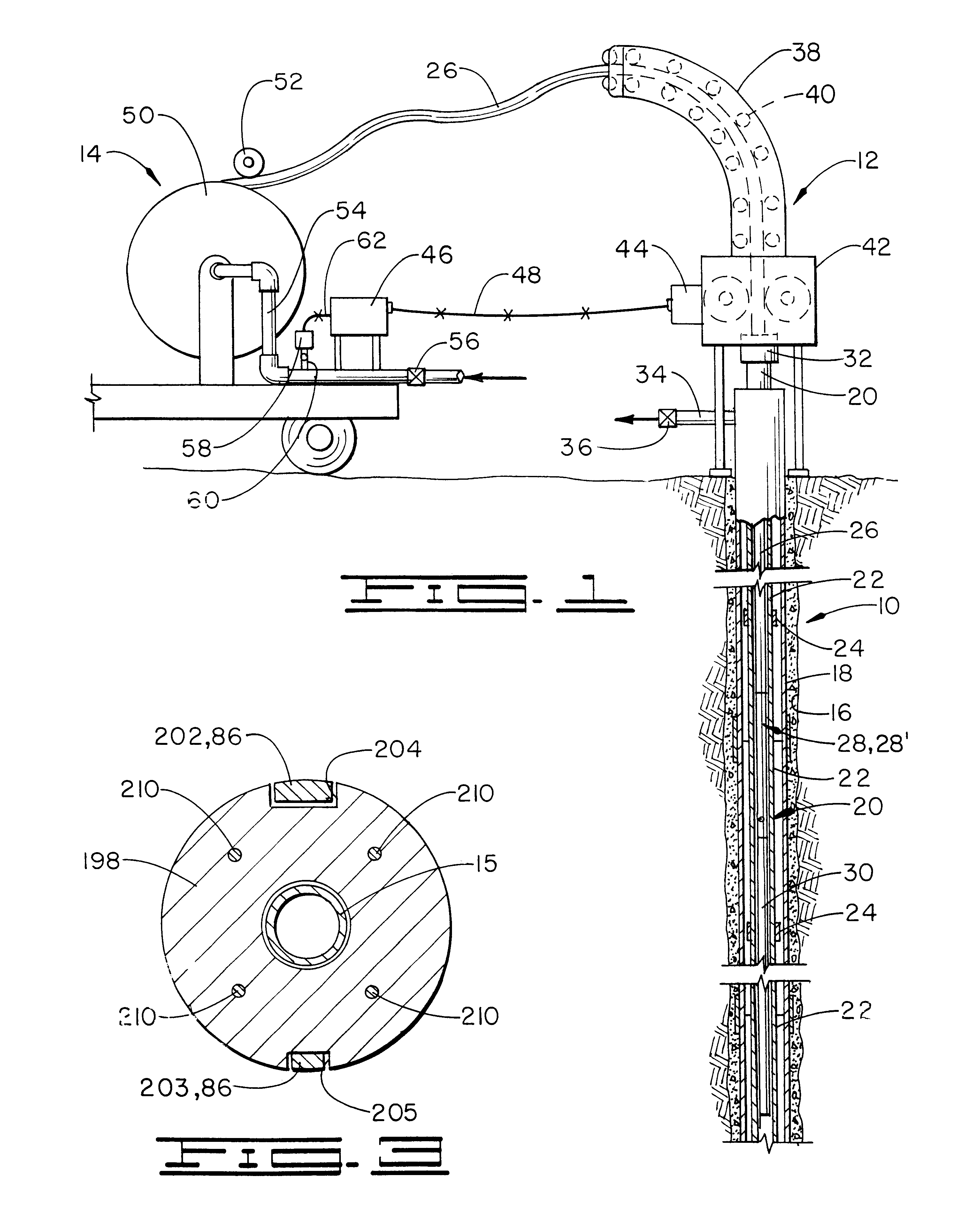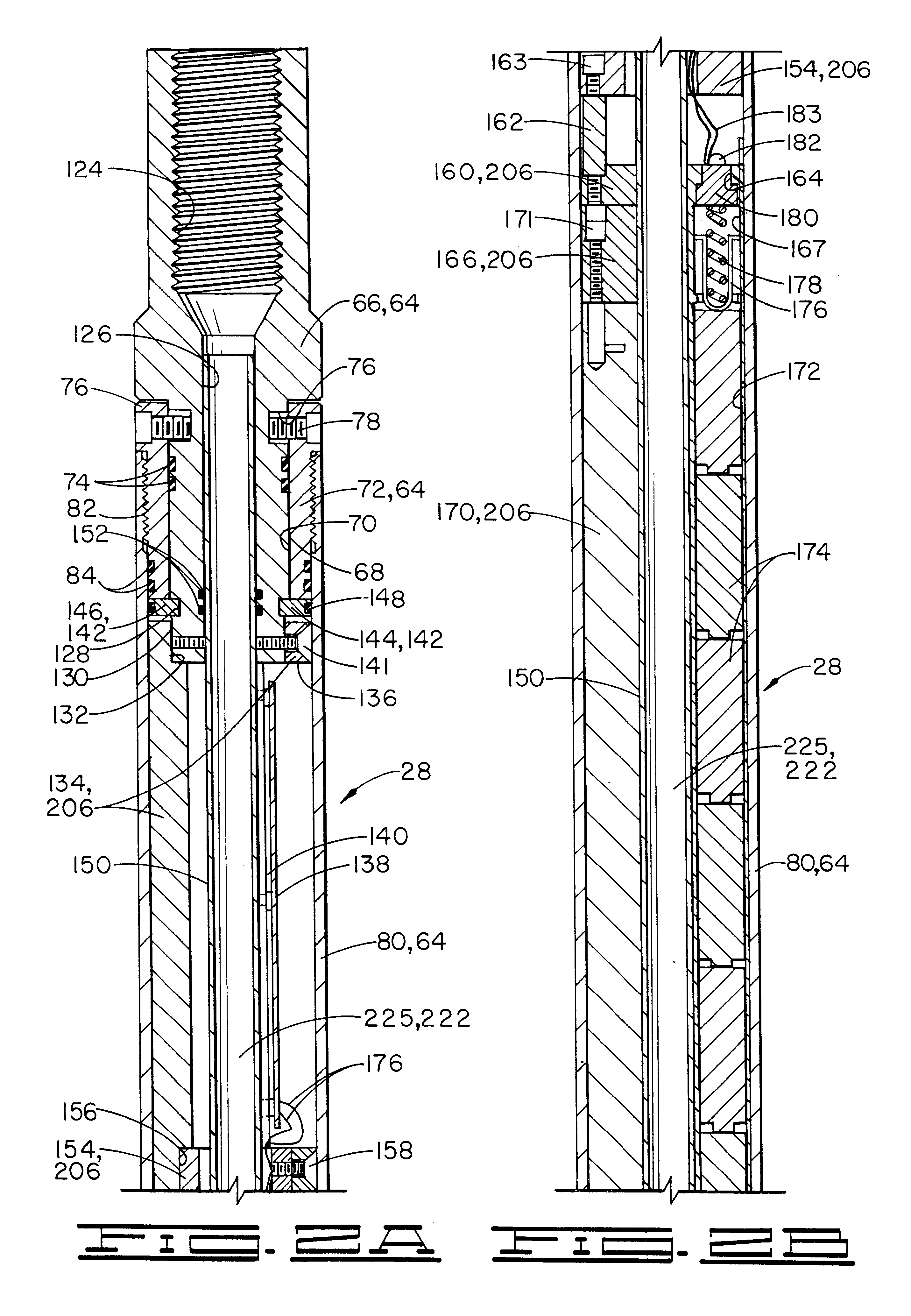Wireless coiled tubing joint locator
- Summary
- Abstract
- Description
- Claims
- Application Information
AI Technical Summary
Problems solved by technology
Method used
Image
Examples
first embodiment
OPERATION OF THE FIRST EMBODIMENT
In operation, first embodiment joint locator 28 is attached to coiled tubing 26 at threaded opening 124 as previously described, and a well tool 30 is connected below joint locator 28. Coiled tubing 26 is injected into well 10 and may be raised within the well using injector 12 in the known manner with corresponding movement of joint locator 28. Thus, joint locator 28 may be raised and lowered within production tubing string 20. As joint locator 28 passes through a pipe joint 24, electromagnetic coil assembly 220 senses the increased mass of the pipe joint.
Referring to FIG. 4, a flow chart of an electrical circuit 390 for joint locator 28 is shown and will be understood by those skilled in the art. Most of electrical circuit 390 is on printed circuit board 138. Power for circuit 390 is provided by batteries 174, and coil assembly 220 and solenoid valve 286 are also part of the circuit.
To minimize the consumption of power, circuit 390 includes a time ...
second embodiment
Referring now to FIG. 5, second embodiment joint locator 28' is shown. Second embodiment joint locator 28' includes the same outer housing 64 of first embodiment joint locator 28. At the lower end thereof, shown in FIG. 5, outer housing 64 thus again comprises circulating sub 114 attached to a bottom sub 118 at threaded connection 120. O-rings 122 provide sealing engagement therebetween.
An insert 400 is disposed in circulating sub 114. Insert 400 has a first outside diameter 402 sized to fit within second bore 318 of piston 292. A sealing means, such as an O-ring 404, provides sealing engagement between insert 400 and piston 292. Insert 400 also includes a second outside diameter 406 sized to fit within first bore 300 of circulating sub 114 and a larger third outside diameter 408 sized to fit within second bore 334 of circulating sub 114.
Insert 400 defines an upper central opening 410 therethrough, forming part of flow passageway 222. One or more transversely extending ports 412, al...
PUM
 Login to View More
Login to View More Abstract
Description
Claims
Application Information
 Login to View More
Login to View More - R&D
- Intellectual Property
- Life Sciences
- Materials
- Tech Scout
- Unparalleled Data Quality
- Higher Quality Content
- 60% Fewer Hallucinations
Browse by: Latest US Patents, China's latest patents, Technical Efficacy Thesaurus, Application Domain, Technology Topic, Popular Technical Reports.
© 2025 PatSnap. All rights reserved.Legal|Privacy policy|Modern Slavery Act Transparency Statement|Sitemap|About US| Contact US: help@patsnap.com



